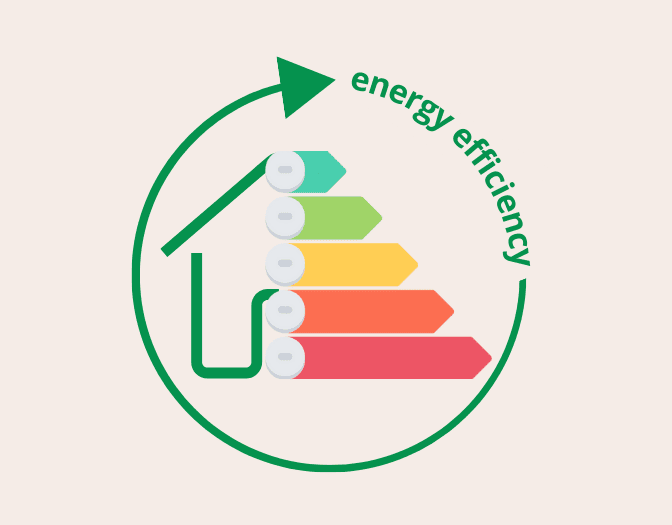This is a well-known fact for renovators in Montreal: the majority of houses or plexes built before the `70s have a glaring lack of insulation. Of course this is not ideal for homeowners, as heating and cooling costs become very high in summer and winter.So, in order to avoid mother nature's unpredictable personality from attaining the inside your home, here are 5 infallible solutions that will allow you to improve the energy efficiency of your property.
Energy efficiency: from the cellar to the attic

1-Insulate and seal
In more recent homes, insulation is provided by installing an air barrier, insulation (2×6 fiberglass wool) and a vapour barrier. This is often impossible to do on old houses, whose walls aren’t the proper thickness (at the time, houses were not designed for optimal insulation). A good alternative is to insulate with spray polyurethane which allows obtaining an excellent level of performance (achieving the r20 standard) without giving up too much space. This insulation keeps heat inside and cold air outside or vice versa depending on the season.
When renovating the basement, it is essential to insulate the foundation from the inside while ensuring that it is protected from water infiltration from the outside (although resistant, stone foundations could suffer from internal insulation if they are not waterproof on the outside).
It is very useful to insulate the edge joists with spray polyurethane covered with a fire barrier such as gypsum (spray polyurethane is toxic and potentially flammable). The rim joist surrounds the house and can become a direct air passage to the inside of the home. Hence the importance of ensuring that it is particularly well isolated.
2-Repair or replace the doors and windows
Replace the inefficient windows and doors with energy-efficient products (Energy Star rated) with double or triple pane glass, a frame that increases their insulating capacity and multiple weatherstripping.
3-Install or replace the heating and ventilation systems
Install or replace the heating and ventilation systems, if their age or a change in the heating requirements justifies it.
Once you are comfortable with the overall insulation of the home, changing a heating and ventilation system can save a lot of energy. At the same time, it will also reduce your energy expenses.
However, it must be understood that a house with a good heating and ventilation system will not have the same efficiency at all if it is poorly insulated. While a well insulated 120 m2 house with a good system can spend between 6300 and 8500 KWH, a poorly insulated house of the same size will often vary between 24 000 and 34 000 KWH in energy expenditure (source: Picbleu.fr).
4-Ventilate the attic
Make sure that the insulation added in the attic is placed in such a way that it does not interfere with ventilation. If rising heat overheats the attic due to lack of space for adequate ventilation, there is a risk of water infiltration, condensation and mold (when snow on the roof melts due to excessive heat) as well as ice accumulation on the edges of the roof.
It is important to insulate, however, we can see that too much isolation can have some counter-effects. A proper balance between insulation and ventilation is key. Aim to meet thermal insulation standards and you should be in a comfortable situation.
5-Insulate the pipes
Add an insulating jacket around the water heater and insulation around plumbing pipes to reduce heat loss. They will therefore need less energy to stay at the desired temperature.
The worst enemy of the piping system is freezing, which can cause the pipes to burst. Proper insulation can help you avoid the inconvenience of water damage.
In conclusion
Here are the 5 solutions to improve the energy efficiency of a home. However, before starting your work, you will find several resources available to you:
— It is possible to have an inspection of the current condition of the walls, roof, foundations, doors and windows carried out by a renovation contractor specializing in energy improvement (such as ESPÉ), who will be accompanied by an independent building envelope specialist. A thermography test (to image the coldest objects with an infrared camera) and a blower door test (to measure the airtightness of buildings) can be carried out to see the extent of the work to be done.
— Then, always before starting the work, you can apply to the Rénoclimat program of the Government of Quebec for a visit from an energy efficiency advisor. He or she will be responsible for helping you identify the work to be done to improve the energy efficiency of your home. Grants will apply for some of your work.


